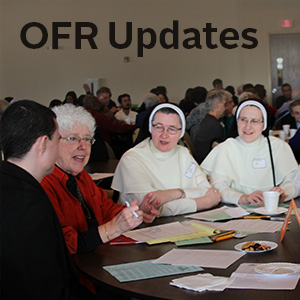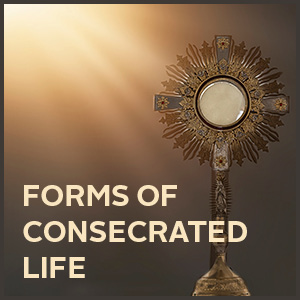Religious Institutes
“Religious institutes are societies in which members pronounce public vows (perpetual or temporary), live in community and share financial sustainability. Religious render a public witness to Christ and to the Church, which entails a separation from the world proper to the character and purpose of each institute.” (See Men’s Religious Institutes - See Women’s Religious Institutes)
Religious institutes can be separated into apostolic and contemplative congregations. Apostolic congregations are devoted to apostolic and missionary activity, and to the many different works inspired by Christian charity outside of the cloister. Contemplative congregations live a life of cloister, constant prayer, offering of self and the daily recitation of the Liturgy of the Hours. See Canon 607.




